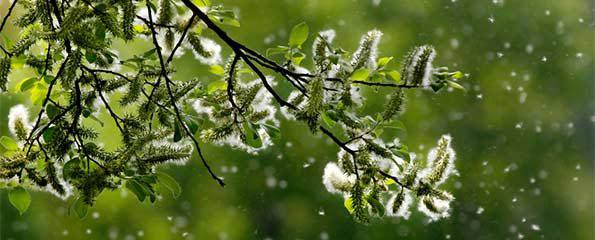New pollen alert system helps hayfever sufferers plan ahead
Australia’s 2.3 million asthma sufferers could have a tool to help prevent life-threatening attacks caused by pollen with a standardised air pollen monitoring and alert system.
A collaborative, four-year research project, The Australian Pollen Allergen Partnership (AusPollen), which aims to set up a national, localised monitoring system kicks off tomorrow, September 1, the start of National Asthma Week.
The team from eight universities is working with the Australasian Society of Clinical Immunology and Allergy, Asthma Australia, the Bureau of Meteorology,CSIRO, Stallergenes Australia and MeteoSwiss to help people with pollen allergies better manage their symptoms.
QUT’s Faculty of Health Associate Professor Davies said Australia’s had two to four pollen sensors that were poorly serviced and not standardised.
“When hay fever is not properly managed it can trigger an asthma attack, even in people whose asthma is well-controlled,” Professor Davies said.
“There have been clear trends for hay fever and asthma discerned across the country at different times and levels matched with observational surveys of which plants are in flower.
“In Brisbane, three common culprits causing hay fever are the pollens from the flowers of subtropical grasses found everywhere.
“Bahia grass is a hardy species sometimes planted by councils that is also used under orchards because it is not palatable for feed; Johnson grass is a weed with feathery pink flowers often found around rail tracks; and, Bermuda grass is used widely for golf courses and tennis courts.
“If we can predict when pollen season starts and alert people using smartphone apps to when levels are high, we can help them manage their exposure to these airborne allergens.
“Preventative measures include taking medications such as antihistamines, staying indoors on high pollen days, and keeping home and car windows closed.
“Another important measure is to not hang sheets outside to dry when a lot of pollen is in the air.”
Professor Davies said high pollen counts had been associated with more trips to emergency departments for children with asthma.
“After a thunderstorm is particularly bad because the pollen grains in the air are split open into smaller allergenic particles that are breathed in more deeply causing inflammation in the lower airway,” she said.
“We have seen asthma epidemics during the La Nina weather pattern’s storm season. Hundreds more patients, for example, were seen in Melbourne during the thunderstorms of 2011 to 2012.
Professor Davies said non-biological air pollution such as car exhaust is well-regulated and monitored.
“But pollen has slipped through the net because it is natural, not manmade. In Australia we have only three or four monitoring stations, whereas in the EU they have 400.
“They are volumetric traps that suck air into a sticky surface which need hand collection. They are then mounted and counted under a microscope. This is a time-consuming process and means pollen spike alerts are delayed.
“We have a partner from Switzerland developing a real-time pollen monitor and this is the ultimate aim of this project: to establish a national, real-time, standardised pollen monitoring system.
“This could save lives and countless health care dollars.”
(Source: Queensland University of Technology)
Dates
Tags
Created by:

 Login
Login














